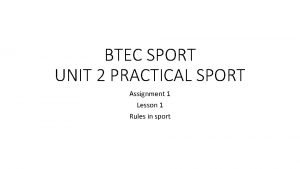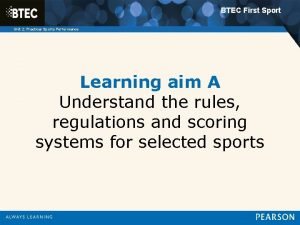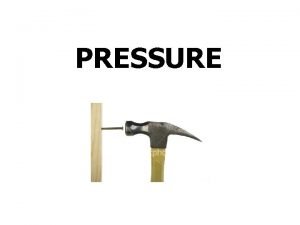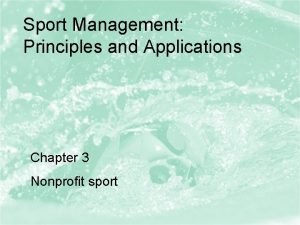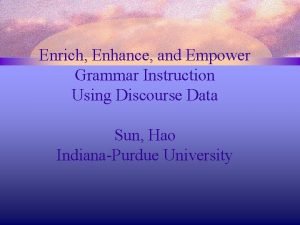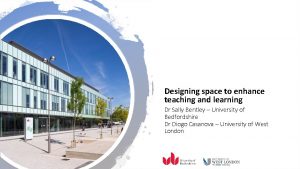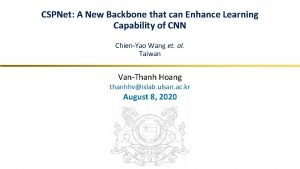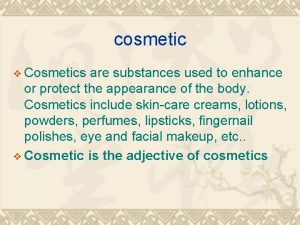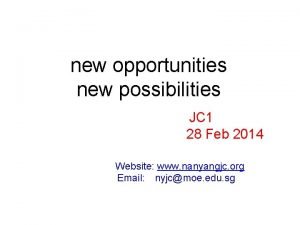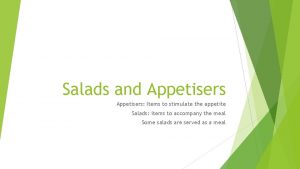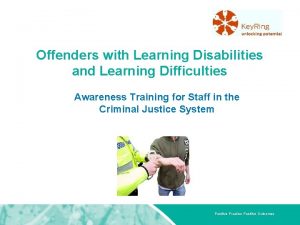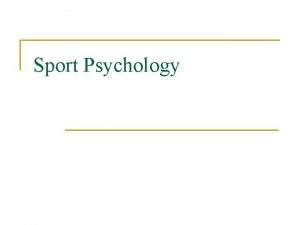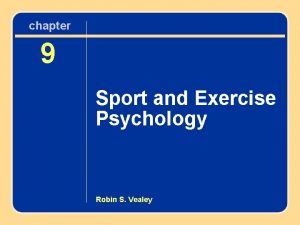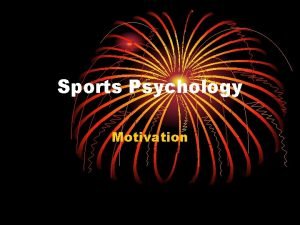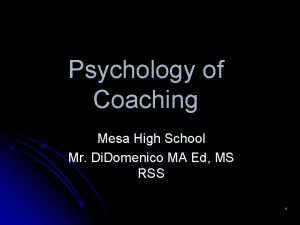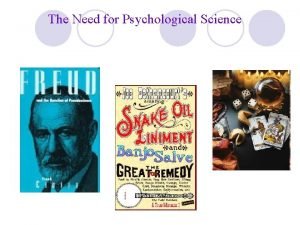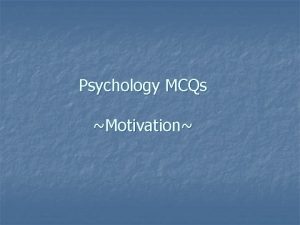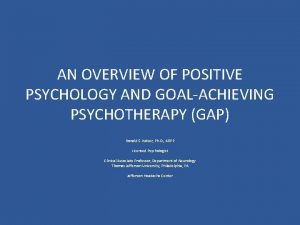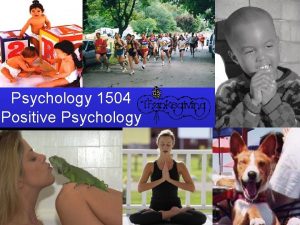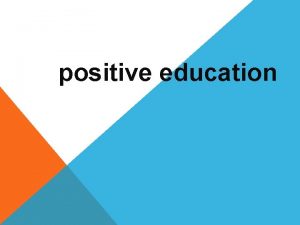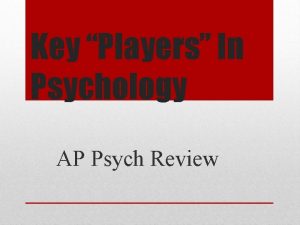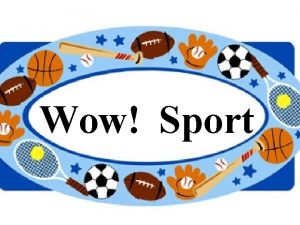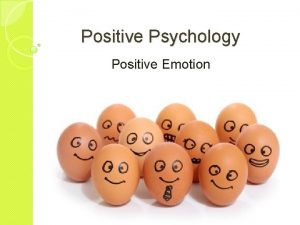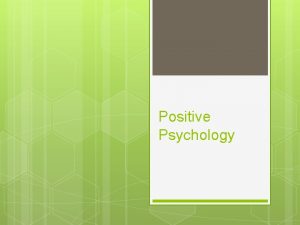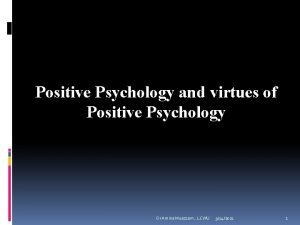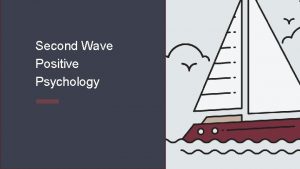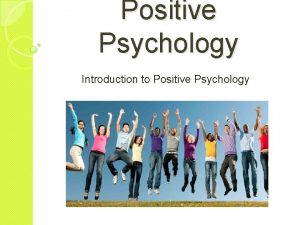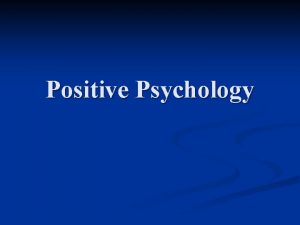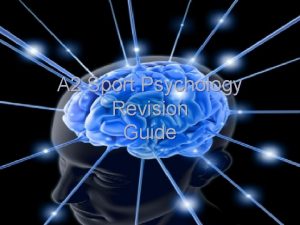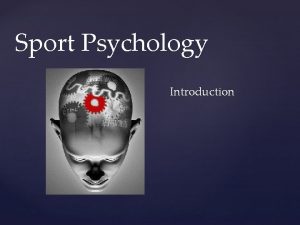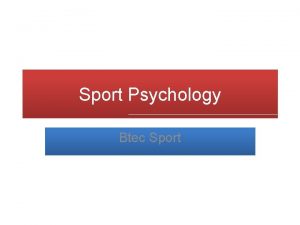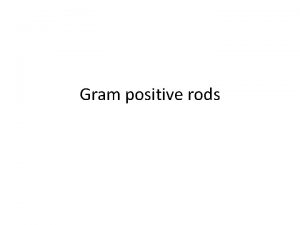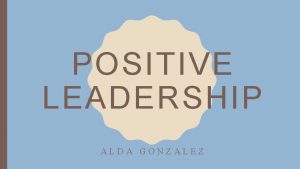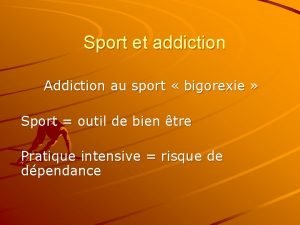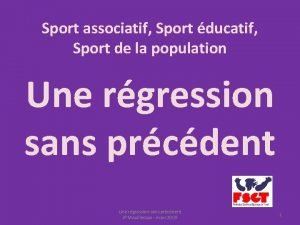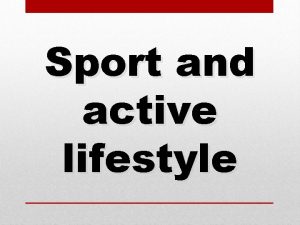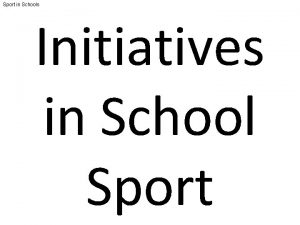Positive Psychology Practical Applications to Enhance Sport Opportunities
































- Slides: 32

Positive Psychology Practical Applications to Enhance Sport Opportunities for Females Physical Education & Human Performance Jeff Cherubini, Ph. D. Associate Professor E-Mail: jeff. cherubini@manhattan. edu

Objectives I. Participants will be able to describe positive sport psychology characteristics and applications to enhance sport opportunities for all girls and women in sport. II. Participants will be able to apply practical strategies to further guide, facilitate, and motivate quality sport experiences for themselves and their athletes.

Positive Psychology ü Positive psychology is an umbrella term for the study of positive emotions, positive character traits, and enabling institutions (Seligman, Steen, Park, & Peterson, 2005). ü About valued experiences, growth, love, education, and play (Seligman & Csikszentmihalyi, 2000). ü Positive psychology and the scientific study of happiness together refer to three paths or pursuits: the pleasant life (positive emotion), the engaged life (engagement), and the meaningful life (social meaning).

Positive Psychology ü When individuals are aware of, pursue and blend all three lives, authentic happiness or the full life is more likely to be achieved (Seligman, 2002; Seligman et al. , 2005). ü Sport, as a lifelong physical activity, provides numerous opportunities for these elements to emerge (Cherubini, 2009 a). ü Given NAGWS focus to develop and deliver equitable and quality sport opportunities for ALL girls and women, positive psychology appears to be a natural match with NAGWS programming goals.

The Pleasant Life Human flourishing characterized by positive emotions – happiness, empowerment, and resiliency. Human flourishing Inner athletes Raw Impulse of Interest

Human Flourishing ü In a flourishing environment, the amount of positive affect (joy, interest, hope) is greater than negative affect (sadness, boredom, despair). • Individually, in a relationship, in a group, and on a team • Greatest influence on the pleasant life and human flourishing ü A prerequisite of a healthy mind / body. ü Positive correlation between frequent positive affect and greater mental/physical health and performance. (Frederickson & Losada, 2005)

Human Flourishing ü Think of a typical warm-up for a sport practice. With emotions being defined as the public face of feelings (Barnes, 2005), how many smiling faces do you see? ü Since “most children do not start out bored and detached” (Hunter & Csikszentmihalyi, 2003, p. 28), how may we, as administrators, educators, coaches, trainers, and volunteers contribute to these future emotions?

Inner Athletes Where is the Love? …. or better yet…. Where has the Love gone?

Inner Athletes “All of us were inner athletes in our infancy – our mind was free of concern or anxiety, focused in the present moment; our body was relaxed, sensitive, elastic, aligned with gravity; our emotions were free-flowing expression, uninhibited, spontaneous. We begin life with nearly unlimited potential. Most of us, however, lose touch with our childhood aptitudes as we become burdened by limiting beliefs, begin to deny our emotions, and experience a variety of physical tensions. ” (Millman, 1994, p. xii)

Inner Athletes Healthy babies naturally love to move about, toddlers love to dance, and children love to play. Yet as we grow into adults, the zest for movement can become completely eroded. Positive psychology and quality coaching/ sport programming can preserve this zest for movement as children and adults grow older. (Cherubini, 2009 a)

Raw Impulse of Interest ü The Experience of Interest is characterized by 3 qualities: 1. Being caught up and fascinated 2. Enjoying what one is doing while 3. In a state of arousal or excitement ü Since we have a limited capacity to pay attention to multiple emotions at one time, if interested we cannot also be bored. ü If the development of interest is the focus of what we are doing, we are more likely to feel empowered to take action. (Hunter & Csikszentmihalyi, 2003)

Living the Pleasant Life ü Establish a flourishing environment • Positive affect > Negative affect • Concrete gestures and lived examples. • Genuine, immediate, consistent, motivational feedback. ü Develop the “raw impulse of interest” in our coaching • Provide opportunities for interests and strengths. • Infuse creative activities – Parkour – Adventure Runs • Incorporate motivational strategies – goals w/personal value, task skill balance, self-improvement, modeling, feedback. (Cherubini, 2009 a)

Living the Pleasant Life ü Enhance interactions with our athletes – help create an exciting, engaging, and relevant environment. Reflect upon your own passion and authenticity. Reflect Review personal strengths and challenges. Review Revise, as needed, attitudes/actions. Revise

Living the Pleasant Life • How much positive affect do I personally experience daily? What most contributes to this? • How do my actions portray genuine positivity, enthusiasm, and interest? How do my athletes perceive my actions? • How would my athletes describe me? How would other coaches, staff, and volunteers describe me? • How authentic are my relationships with my athletes, their parents, other coaches, staff, and volunteers? • How interesting are my coaching sessions / practices? • How am I addressing the interests of my athletes? (Cone, 2007)

Flow Mindfulness The Engaged Life Being absorbed in whatever activity one is engaged in at the present moment.

Flow What most leads to a higher ratio of positive affect is the “ability to become absorbed in whatever activity one is engaged in at the present moment, the ability to live in the moment and forget about the past, future, and self…it is the capacity to experience flow. ” (Maddux, 1997, 344) ü Flow, being fully engaged, is critical to our happiness and an integral aspect of intrinsic motivation for sport.

Mindfulness ü If the sole focus of sport/physical activity is a future outcome, “…then we finally get there, when we finally arrive, when we finally have the hearts and lungs and bodies we have been working for, we will have no capacity for enjoying it because we will be focused on some new future goals or worried about losing what we have achieved. In fact, we might go so far as to say that the most important thing we are developing while exercising mindfully are not stronger hearts or stronger lungs, but the ability to live in the moment, to be fully engaged in the here and now. ” (Maddux, 1997, p. 342)

Mindfulness Are you Happy? ü Preoccupation with happiness as something we attain in the future by making sacrifices in the present. ü Eastern philosophies teaching that happiness and contentment is not something to be earned in the future… but something to be discovered by becoming immersed in life in the present. ü If we are always looking for happiness down the road, then we truly are missing the opportunity for happiness in the experiences we are currently living. (Maddux, 1997)

Living the Engaged Life ü Acknowledge sport, and all physical activities, as a mindful process rather than a mindless habit or future outcome. • Shift in philosophy – the process is our product. (Cherubini, 2009 a, 2009 b) • Put the play back into the playground. “Play as an attitude, a joyous spirit…Play, in other words, is an end in itself. ” (Twietmeyer, 2007, p. 202)

Living the Engaged Life ü Promote engagement in sport based on autonomy, personal control, optimal challenge, and well-being. • Create opportunities for Organic Play in practice. ü Motivate athletes towards self-determined behavior that makes them feel in control, competent, and connected. (Kilpatrick, Hebert, & Jacobsen, 2002)

Living the Engaged Life ü Use process/mastery goals and activities that are perceived as comfortably challenging – a ‘just right’ task/skill balance. (Cherubini, 2009 b) ü Empower athletes with voluntary, structured, behavior-change programs emphasizing personal choice and opportunities to analyze behavior, plan for change, use resources, execute, evaluate, and reevaluate. • General Resistance Resources + Sense of Coherence

Living the Engaged Life ü Experience Sampling Method – prompts coaches and athletes to recognize level of engagement at given moment in time. (adapted from Foster & Lloyd, 2007) • At the time of the prompt, what were you doing? • How interested are you in this drill, training, practice? • How much concentration do you need? • How much skill is needed? How challenging is this? • How motivated are you to continue? ü Through increased awareness, we can plan for, and participate in more mindful activities.

Living the Engaged Life Positive sport psychology and the engaged life occur when our athletes are “happy not because of what they do, but because of how they do it. ” (Csikszentmihalyi, 1999, p. 826) • With this type of focus, sport participation and lifelong physical activity is no longer something that girls and women perceive that they need to do, but rather something that they want to do.

Constructive goals of human behavior Flourishing communities The Meaningful Social interest Life Pursuit of happiness outside of oneself, with an emphasis on the greater good of society.

Flourishing Communities ü Critical to authentic happiness and quality sport programming is establishing and maintaining flourishing communities that promote pleasant and engaged lives. ü Sport and physical activities provide many opportunities for administrators, educators, coaches, trainers, volunteers, and athletes to see – “the value of human lives beyond our own…[as] play and games are a unique arena of experience that allows us to see both human fraternity and human vulnerability. ” (Twietmeyer, 2007, p. 204)

Social Interest ü Natural match with the NAGWS mission to develop/deliver equitable and quality sport opportunities for ALL girls and women in a manner that promotes social justice and change. • Clear benefit to society. • Positive relationships formed through shared physical and emotional challenges. • Development of character strengths of kindness, love, social intelligence, fairness, and teamwork.

Constructive Goals ü Constructive goals of human behavior and human interest are integral to quality sport experiences. With these goals, motivation is both personal and social contributing to the meaningful life. • Involvement (social interest, equality, and cooperation) • Encouragement (social support and love) • Improvement (betterment for self and society) • Accomplishment (contributing to self and society) (Lemire, 2007)

Living the Meaningful Life ü Emphasize and promote supportive relationships, mentoring and modeling and reinforcement of positive behaviors. ü Emphasize and promote sport and lifelong physical activity as a positive social influence on the actions of others. ü Integrate cooperative activities, character education, and adventure programming into coaching and training sessions. (Cherubini, 2009 a)

Living the Meaningful Life ü Orient programming toward constructive goals by providing. . . • A cooperative learning environment. • Unconditional support and love. • The knowledge and skills needed to change and improve. • The ability to take action and achieve success.

Positive Psychology ü Within positive sport psychology, sparking initiative and getting excited for sport and physical activities is the key. ü In their original introduction to the science of positive psychology, Seligman & Csikszentmihalyi (2000) noted, “The quality of current experience is the basic building block of a positive psychology” (p. 8).

Positive Psychology ü With programming acknowledging these pursuits, NAGWS members are in the unique position to contribute to and promote positive sport psychology and a lifetime of enhanced opportunities for all girls and women in sport. ü Authentic happiness through quality sport programming is possible when administrators, educators, coaches, trainers, volunteers, and athletes practice and experience pleasant, engaged, and meaningful lives. (Cherubini, 2009 a)

The Pleasant Life Preserves our natural zest for movement as children and adults grow older. Positive Sport Psychology The Meaningful Life Develops character strengths of kindness, love, social intelligence, fairness, and teamwork. The Engaged Life Provides numerous opportunities for flow to occur – helping make sport participation something we want to do versus something we feel we have to do.
 Positive psychology ap psychology definition
Positive psychology ap psychology definition Btec sport unit 2 rules and regulations
Btec sport unit 2 rules and regulations Btec sport practical
Btec sport practical How can polynomials be used in real life
How can polynomials be used in real life Other practical applications of boyle's law
Other practical applications of boyle's law Practical applications of biotechnology
Practical applications of biotechnology Sport management principles and applications
Sport management principles and applications Positive deviance in sport examples
Positive deviance in sport examples Grammar to enrich and enhance writing
Grammar to enrich and enhance writing A particular or unique version of a style is a
A particular or unique version of a style is a Enhance an image
Enhance an image Cspnet
Cspnet Vcosmetics
Vcosmetics Enhance an image
Enhance an image Nyjc promotion criteria
Nyjc promotion criteria Enhance life
Enhance life Salad that stimulate appetite
Salad that stimulate appetite Can hypnosis enhance recall of forgotten events
Can hypnosis enhance recall of forgotten events Fluid intelligence ap psychology
Fluid intelligence ap psychology Mannitol fermentation
Mannitol fermentation What's 8 + 5
What's 8 + 5 Positive practice positive outcomes
Positive practice positive outcomes History of sport psychology
History of sport psychology Sport and exercise psychology definition
Sport and exercise psychology definition Definition of motivation in sport psychology
Definition of motivation in sport psychology Psyc 1504 learning journal unit 1
Psyc 1504 learning journal unit 1 Examples of naturalistic observation
Examples of naturalistic observation Positive psychology mcqs
Positive psychology mcqs Computer metaphor psychology
Computer metaphor psychology Concepts of positive psychology
Concepts of positive psychology Positive psychology 1504
Positive psychology 1504 Strath haven positive psychology curriculum
Strath haven positive psychology curriculum Positive psychology ap psych
Positive psychology ap psych

